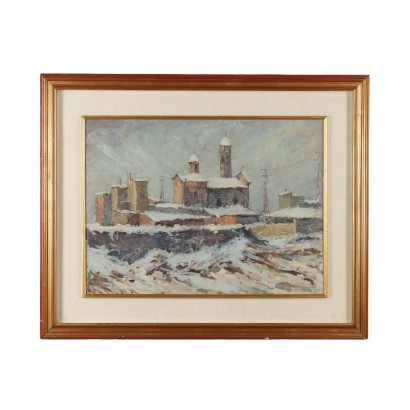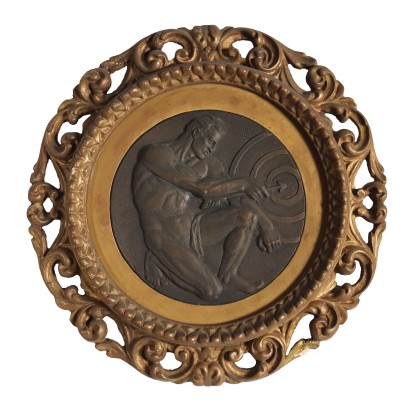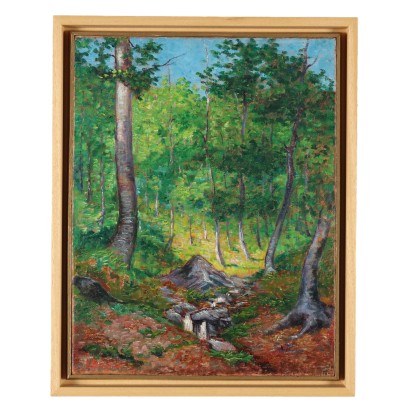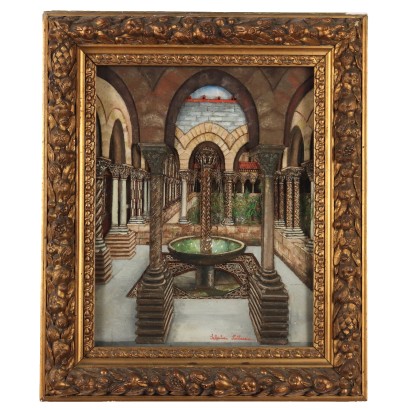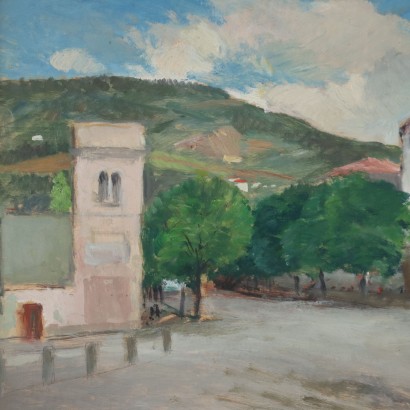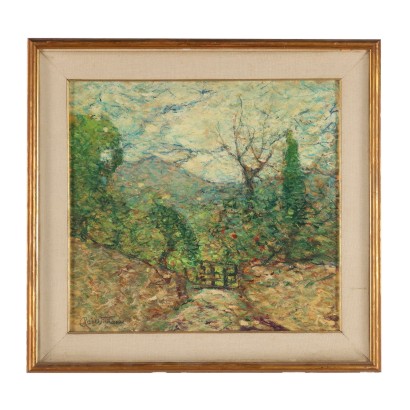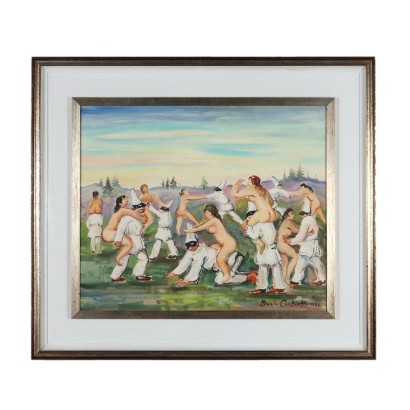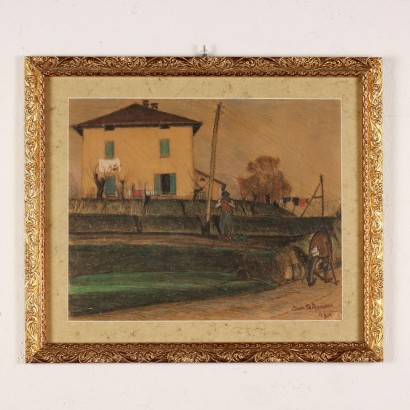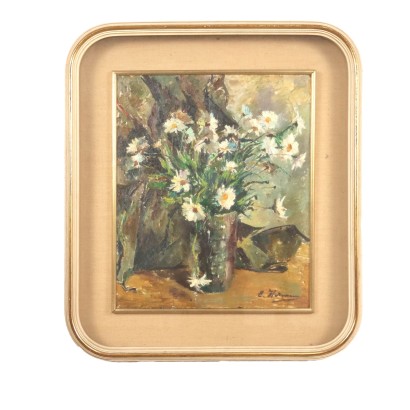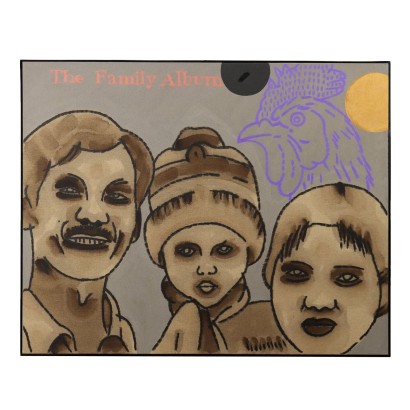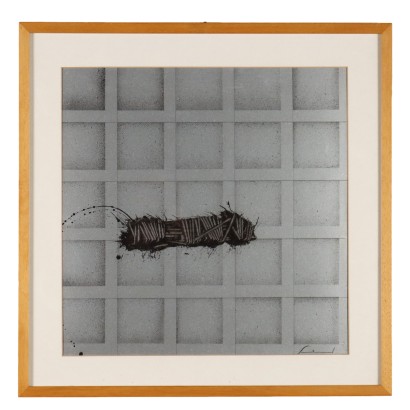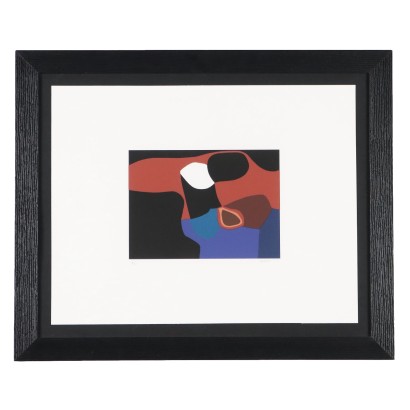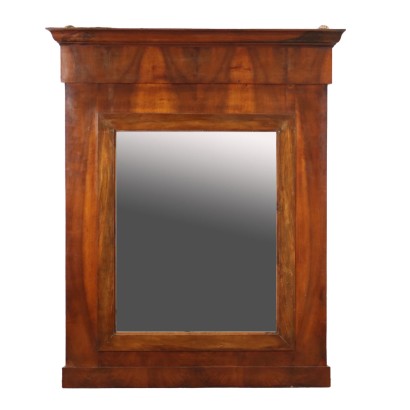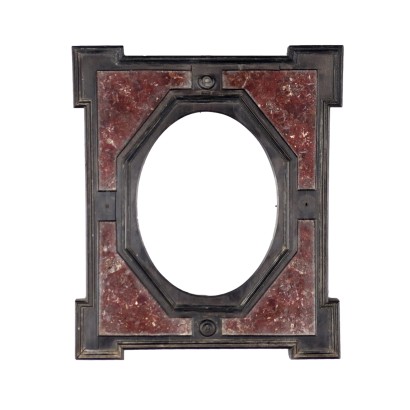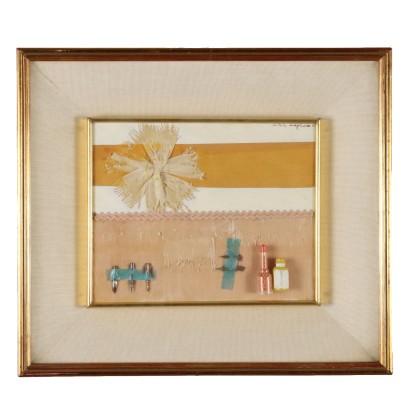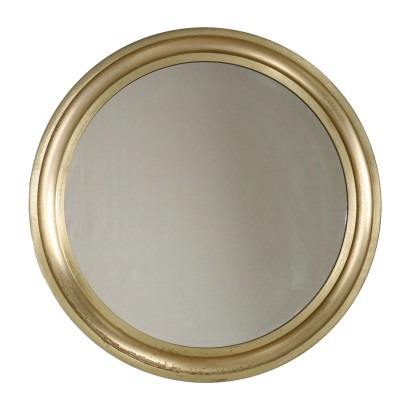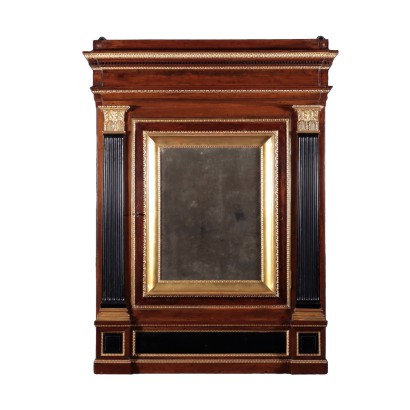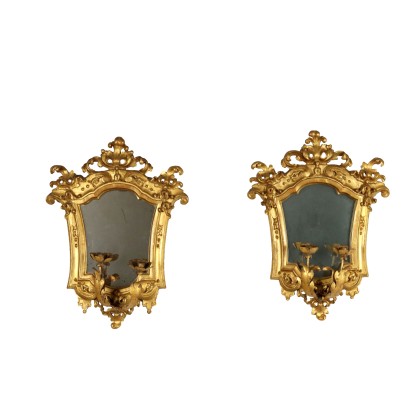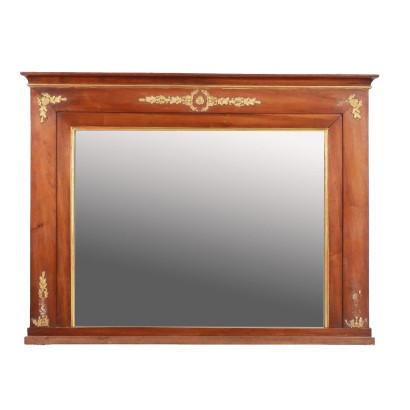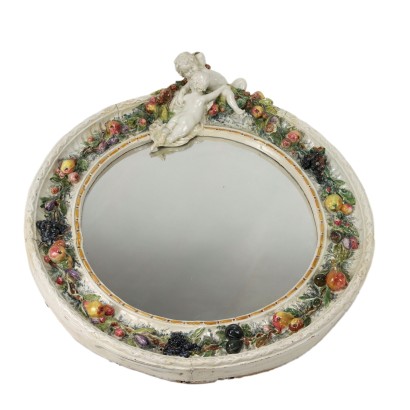G. Valbusa Oil on Hardboard Italy XX Century - Glimpse of a snowy town
Features
Glimpse of a snowy town
Artist: Gaetano Valbusa (1905-1989)
Artwork title: Scorcio di Paese Innevato
Age: Contemporary
Subject: Views/City Glimpses
Origin: Italy
Artistic technique: Painting
Technical specification: Oil on Hardboard
Description : Scorcio di Paese Innevato
Oil on hardboard. Signed lower right. Born in 1905, Gaetano Valbusa worked for over forty years as a worker in the Brescia Mechanical Workshops, until retirement, devoting himself to painting only as a passion. Landscape painter, thanks to business trips he was able to portray "en plein air" glimpses of the whole world, even if the glimpses of the places in Brescia are the most recurring subject. Affiliated to the Brescian Artists Association, he was able to exhibit his works and make himself known by critics. In his canvases the landscapes are permeated with great serenity and tranquility, an elegy of serene memories of real life. The glimpse proposed here is presented in a frame.
Product Condition:
Product in very good condition which may show slight traces of wear; it may have undergone restoration work carried out by an expert.
Frame Size (cm):
Height: 83
Width: 103
Depth: 4,5
Artwork dimensions (cm):
Height: 55
Width: 75
Additional Information
Artist: Gaetano Valbusa (1905-1989)
Born in Valeggio sul Mincio, Gaetano Valbusa had a difficult childhood which forced him still very young to work in mechanical workshops and to devote himself to painting initially only as a pastime, and favoring that "en plein air". His work often takes him around the world, allowing him to paint distant places, exotic landscapes. In the meantime he joined the Brescian Artists Association and participated in group exhibitions, making himself recognized by critics. In 1961 he sets up his first solo show at the "Loggetta" in Brescia. Upon retirement, he spends all his energy on painting, continuing to travel, even if the localities of Brescia become more and more his favorite subjects. He died in 1989. .Age: Contemporary
ContemporarySubject: Views/City Glimpses
Artistic technique: Painting
La pittura è l'arte che consiste nell'applicare dei pigmenti a un supporto come la carta, la tela, la seta, la ceramica, il legno, il vetro o un muro. Essendo i pigmenti essenzialmente solidi, è necessario utilizzare un legante, che li porti a uno stadio liquido, più fluido o più denso, e un collante, che permetta l'adesione duratura al supporto. Chi dipinge è detto pittore o pittrice. Il risultato è un'immagine che, a seconda delle intenzioni dell'autore, esprime la sua percezione del mondo o una libera associazione di forme o un qualsiasi altro significato, a seconda della sua creatività, del suo gusto estetico e di quello della società di cui fa parte.Technical specification: Oil on Hardboard
Other customers have searched:
Arte Novecento, dipinti del 900, olio su tavola, pittura olio su tela, arte 800, pittura antica, arte contemporanea, quadro del '900, quadro grande, quadro olio su tela..
Se sei un appassionato d'arte, non perderti i nostri approfondimenti sul Blog Arte Di Mano in Mano e su FineArt by Di Mano in Mano - Arte:
Leggi di più
Ecco alcuni tra i principali articoli:
Vedute
Falsi nell'arte antica
Un messaggio di fiducia per ripartire
La potenza espressiva dell'arte figurativa etiope
Breve Storia del Collezionismo
Giorgio Upiglio, maestro dei libri d'artista
Matthias Withoos detto "Calzetta bianca"
San Rocco pensaci tu - Classic Monday
Ecco alcuni esempi dell'arte del Novecento più bella che puoi trovare da noi:
I Raccoglitori di patate - Lavoro estivo - Augusto Colombo, 1935
I Taglialegna - Lavoro invernale - Augusto Colombo, 1933
Il lavoro femminile, Contardo Barbieri, 1954 ca.
Sapevi che l'arte può essere anche un ottimo investimento (e non solo per grandi portafogli)?
L'Arte tra Collezionismo e Investimento
FineArt: Arte come investimento
Dai un'occhiata alle nostre rubriche di divulgazione sull'arte:
Epoche
Lavorazioni e tecniche
Mostre ed Eventi
Protagonisti
Leggi di più
Ecco alcuni tra i principali articoli:Vedute
Falsi nell'arte antica
Un messaggio di fiducia per ripartire
La potenza espressiva dell'arte figurativa etiope
Breve Storia del Collezionismo
Giorgio Upiglio, maestro dei libri d'artista
Matthias Withoos detto "Calzetta bianca"
San Rocco pensaci tu - Classic Monday
Ecco alcuni esempi dell'arte del Novecento più bella che puoi trovare da noi:
I Raccoglitori di patate - Lavoro estivo - Augusto Colombo, 1935
I Taglialegna - Lavoro invernale - Augusto Colombo, 1933
Il lavoro femminile, Contardo Barbieri, 1954 ca.
Sapevi che l'arte può essere anche un ottimo investimento (e non solo per grandi portafogli)?
L'Arte tra Collezionismo e Investimento
FineArt: Arte come investimento
Dai un'occhiata alle nostre rubriche di divulgazione sull'arte:
Epoche
Lavorazioni e tecniche
Mostre ed Eventi
Protagonisti
Product availability
The product can be seen at Cambiago
Disponibilità immediata
Pronto per la consegna in 2 giorni lavorativi dalla conferma dell'ordine del prodotto.
Consegna tra i 7 e i 15 giorni in tutta Italia. Per le isole e le zone difficilmente raggiungibili i tempi di consegna possono variare.



